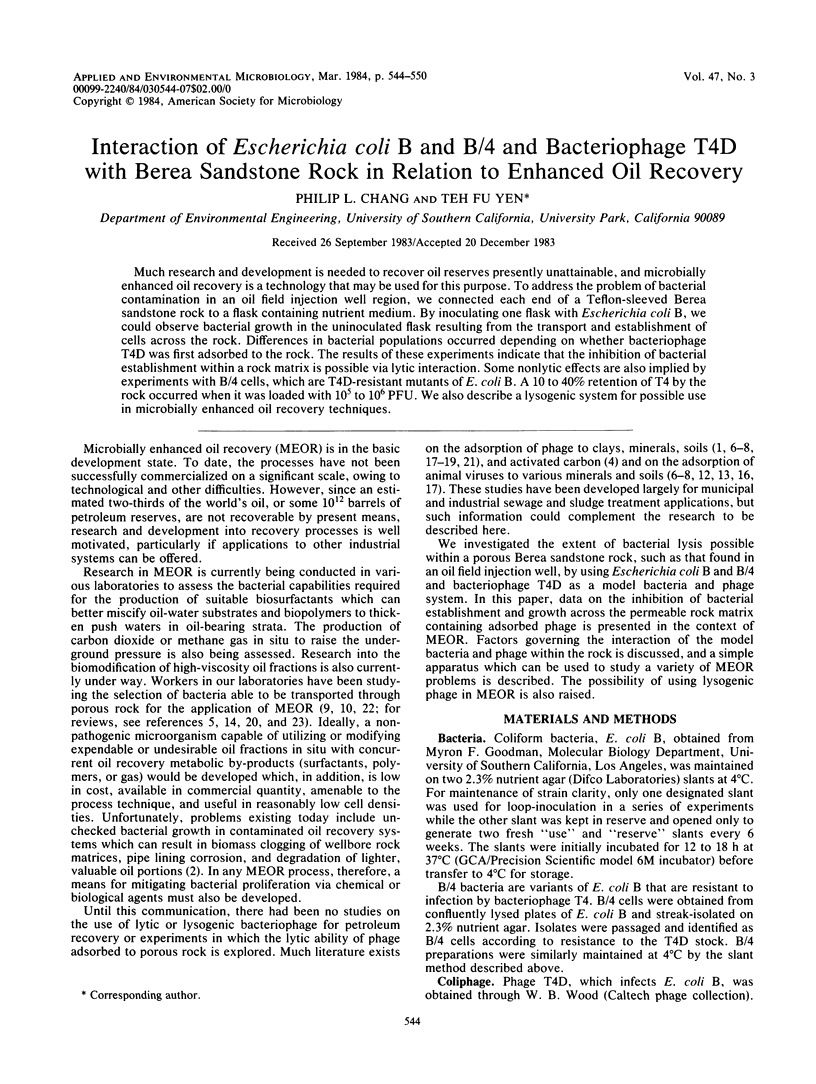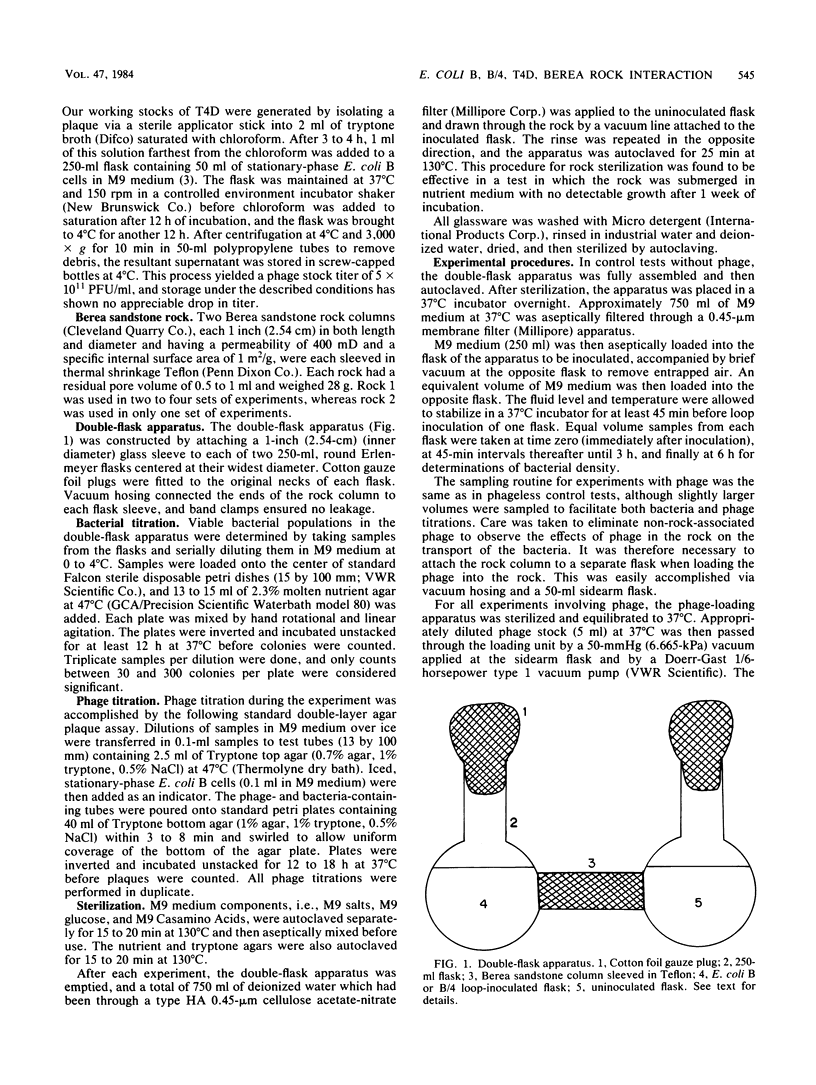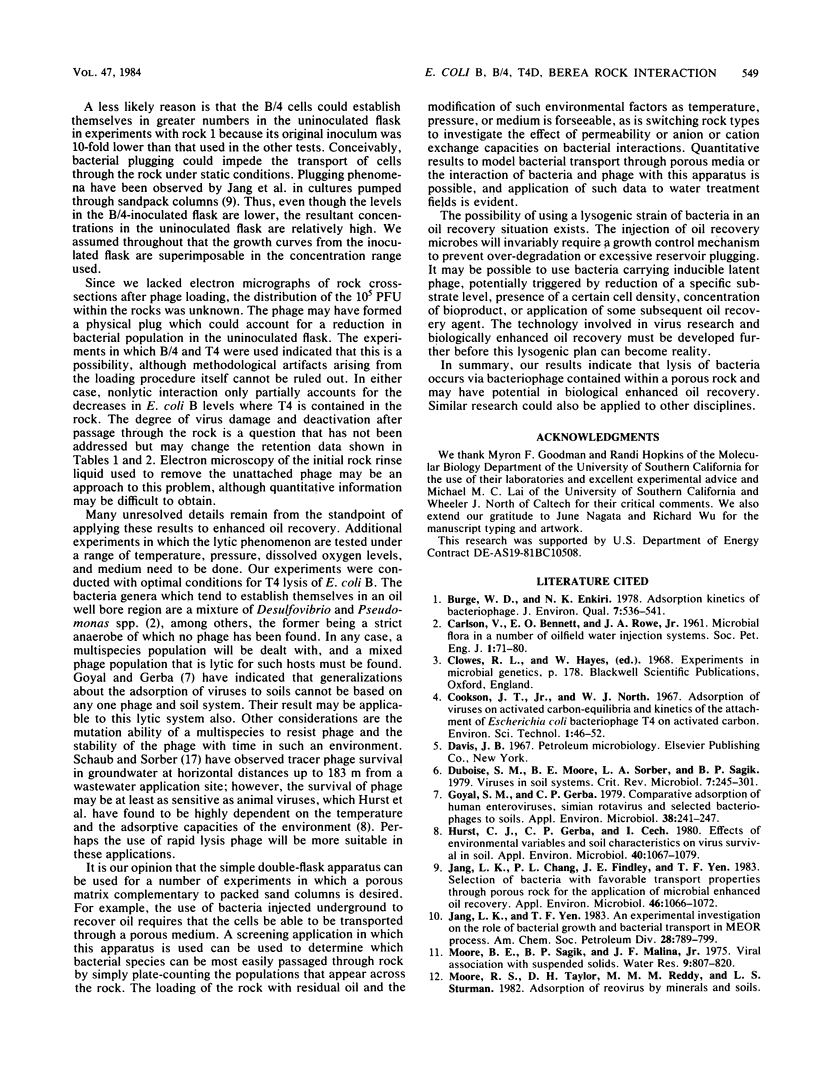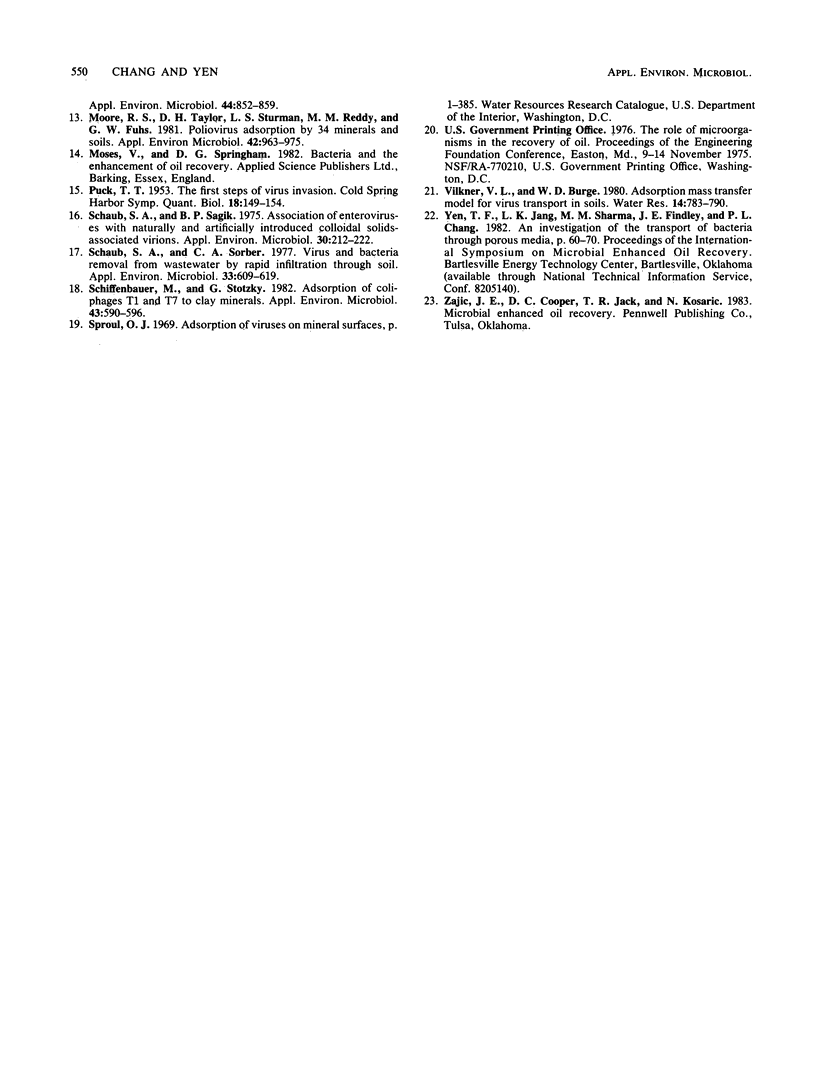Abstract
Much research and development is needed to recover oil reserves presently unattainable, and microbially enhanced oil recovery is a technology that may be used for this purpose. To address the problem of bacterial contamination in an oil field injection well region, we connected each end of a Teflon-sleeved Berea sandstone rock to a flask containing nutrient medium. By inoculating one flask with Escherichia coli B, we could observe bacterial growth in the uninoculated flask resulting from the transport and establishment of cells across the rock. Differences in bacterial populations occurred depending on whether bacteriophage T4D was first adsorbed to the rock. The results of these experiments indicate that the inhibition of bacterial establishment within a rock matrix is possible via lytic interaction. Some nonlytic effects are also implied by experiments with B/4 cells, which are T4D-resistant mutants of E. coli B. A 10 to 40% retention of T4 by the rock occurred when it was loaded with 105 to 106 PFU. We also describe a lysogenic system for possible use in microbially enhanced oil recovery techniques.
Full text
PDF






Selected References
These references are in PubMed. This may not be the complete list of references from this article.
- Duboise S. M., Moore B. E., Sorber C. A., Sagik B. P. Viruses in soil systems. CRC Crit Rev Microbiol. 1979 Nov;7(3):245–301. doi: 10.3109/10408417909082016. [DOI] [PubMed] [Google Scholar]
- Goyal S. M., Gerba C. P. Comparative adsorption of human enteroviruses, simian rotavirus, and selected bacteriophages to soils. Appl Environ Microbiol. 1979 Aug;38(2):241–247. doi: 10.1128/aem.38.2.241-247.1979. [DOI] [PMC free article] [PubMed] [Google Scholar]
- Hurst C. J., Gerba C. P., Cech I. Effects of environmental variables and soil characteristics on virus survival in soil. Appl Environ Microbiol. 1980 Dec;40(6):1067–1079. doi: 10.1128/aem.40.6.1067-1079.1980. [DOI] [PMC free article] [PubMed] [Google Scholar]
- Jang L. K., Chang P. W., Findley J. E., Yen T. F. Selection of bacteria with favorable transport properties through porous rock for the application of microbial-enhanced oil recovery. Appl Environ Microbiol. 1983 Nov;46(5):1066–1072. doi: 10.1128/aem.46.5.1066-1072.1983. [DOI] [PMC free article] [PubMed] [Google Scholar]
- Moore R. S., Taylor D. H., Sturman L. S., Reddy M. M., Fuhs G. W. Poliovirus adsorption by 34 minerals and soils. Appl Environ Microbiol. 1981 Dec;42(6):963–975. doi: 10.1128/aem.42.6.963-975.1981. [DOI] [PMC free article] [PubMed] [Google Scholar]
- PUCK T. T. The first steps of virus invasion. Cold Spring Harb Symp Quant Biol. 1953;18:149–154. doi: 10.1101/sqb.1953.018.01.024. [DOI] [PubMed] [Google Scholar]
- Schaub S. A., Sagik B. P. Association of enteroviruses with natural and artificially introduced colloidal solids in water and infectivity of solids-associated virions. Appl Microbiol. 1975 Aug;30(2):212–222. doi: 10.1128/am.30.2.212-222.1975. [DOI] [PMC free article] [PubMed] [Google Scholar]
- Schaub S. A., Sorber C. A. Virus and bacteria removal from wastewater by rapid infiltration through soil. Appl Environ Microbiol. 1977 Mar;33(3):609–619. doi: 10.1128/aem.33.3.609-619.1977. [DOI] [PMC free article] [PubMed] [Google Scholar]
- Schiffenbauer M., Stotzky G. Adsorption of coliphages T1 and T7 to clay minerals. Appl Environ Microbiol. 1982 Mar;43(3):590–596. doi: 10.1128/aem.43.3.590-596.1982. [DOI] [PMC free article] [PubMed] [Google Scholar]


